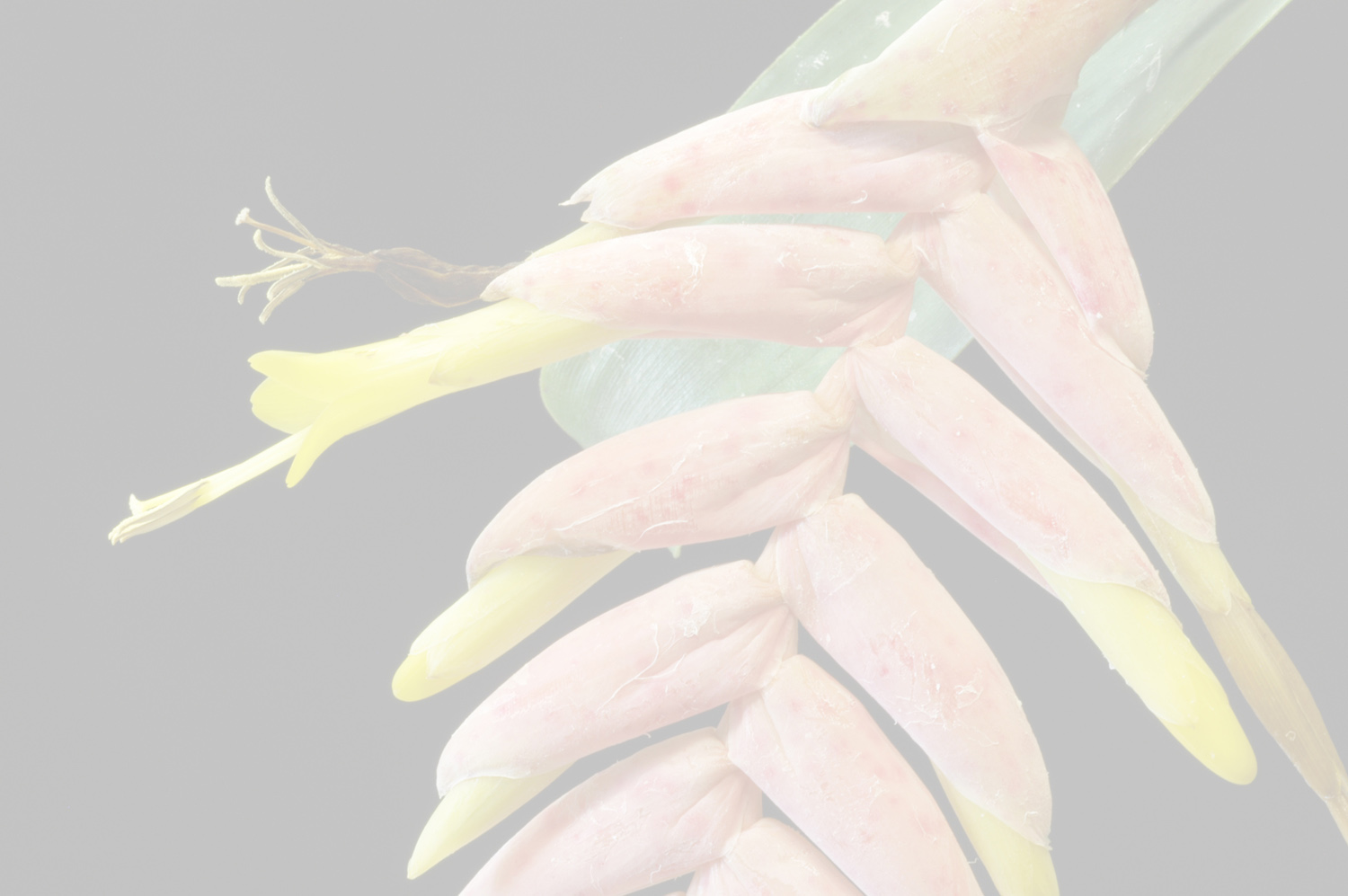

 Vriesea vellozicola Leme & J.A.Siqquera[as Vriesea vellozicola Leme & J. A. Siqueira]
Vriesea vellozicola Leme & J.A.Siqquera[as Vriesea vellozicola Leme & J. A. Siqueira]Diagnose: —Species nova V. limae L. B. Sm. affinis est, sed modo vivendi epiphytico, foliis praesertim subtus atropurpureo guttatis, petalis subduplo angustioribus, corollis per anthesim subtubularibus et antheris brevioribus differt. Observations: —DISCUSSION
Vriesea vellozicola is distinguished by its epiphytic habit exclusively on Velozia sp. found on inselbergs in Espirito Santo. This is an amazing case of specialization, not of accidental epiphytism, for within the areas investigated, we found no plants growing on rocky outcrops, as happens with the other species of the Vriesea limae complex. Furthermore, V vellozicola differs from V limae in its slender leaf rosette, leaves with dark purple spots, especially on the abaxial surface, narrower petals (11-12 mm vs. 17-20 mm wide), subtubular corolla (vs. campanulate), and shorter anthers (4-5 mm vs. 7 mm long)
The overall aspect of the V vellozicola plants also indicates an affinity with V. oligantha (Baker) Mez, a species from the Campos Rupestres of Minas Gerais. The isotype of V oligantha deposited at the Paris Museum as well as studies by Paula & Guarconi (2005) indicate that this species is epiphytic on Vellozia sp. However, the new species differs in its leaf blades with conspicuous dark purple spots, upper scape bracts distinctly shorter than the internodes (vs. as long as the internodes), inflorescence proportionally shorter (8-14 cm vs. 12-19 cm long), floral bracts suborbicular (vs. ovate) and smaller (12-14 mm vs. ca. 24 mm wide), and sepals shorter (20-21 mm vs. 30 mm long).
As mentioned above, V vellozicola is an exclusive epiphyte of Vellozia sp., found on plateaus or inselbergs at altitudes of ca. 150 to 400 m. It grows near the coast, in Serra Municipality, locality of the holotype, ranging farther inland to Colatina Municipality, where the paratype was collected. The species apparently reaches ecologically similar areas in Minas Gerais, near the Mantena region, which is reasonable given the source locality of the paratype.
Although V. vellozicola populations are protected in the wild by their remote location, there are no records of the species being found in conservation units, which would guarantee more effective protection.Edited from (15-12-2014): Siqueira & Leme 2007. (protologue) Fragments of the Atlantic Forest of Northeast Brazil - Biodiversity, Conservation and the Bromeliads .